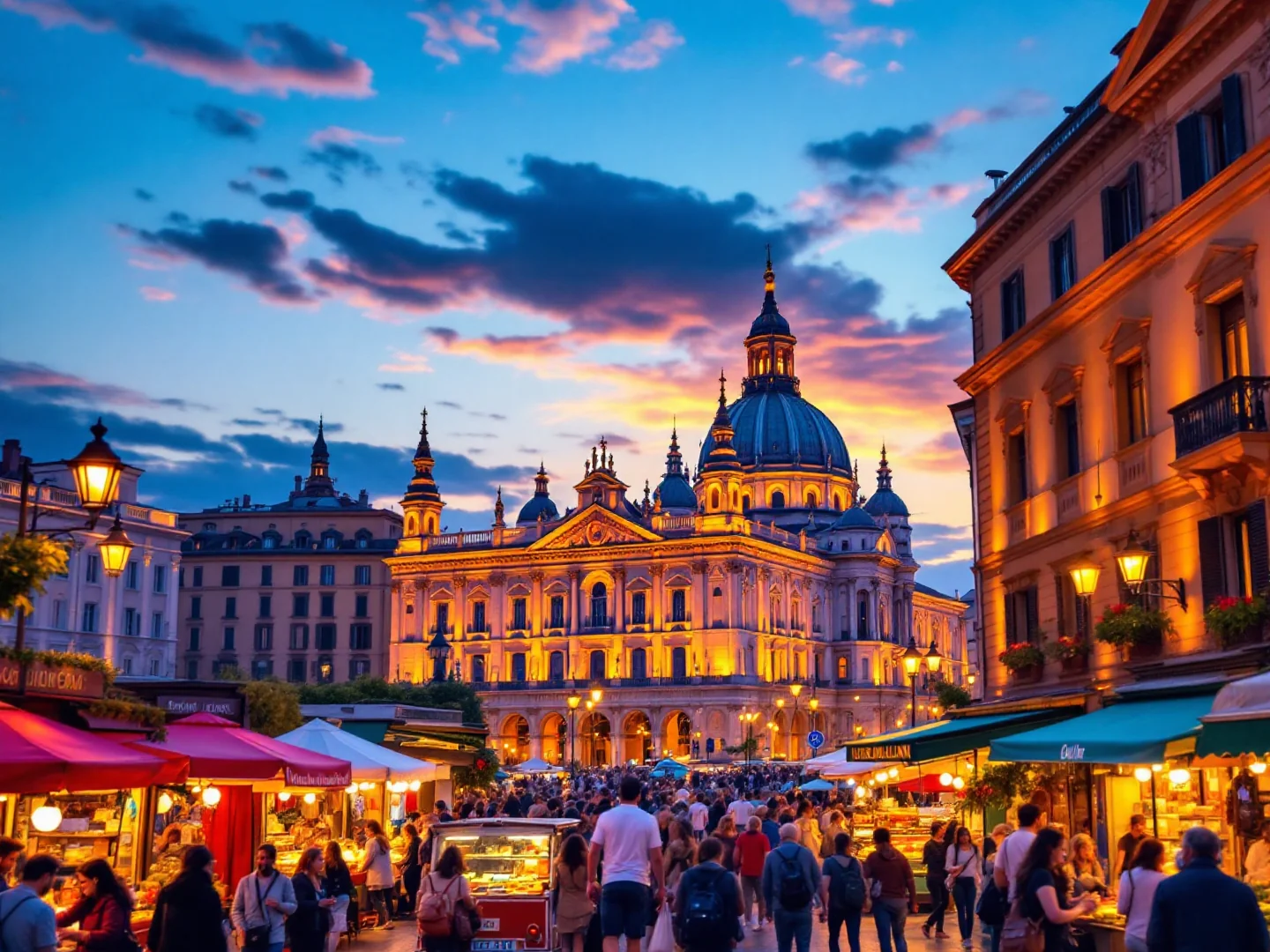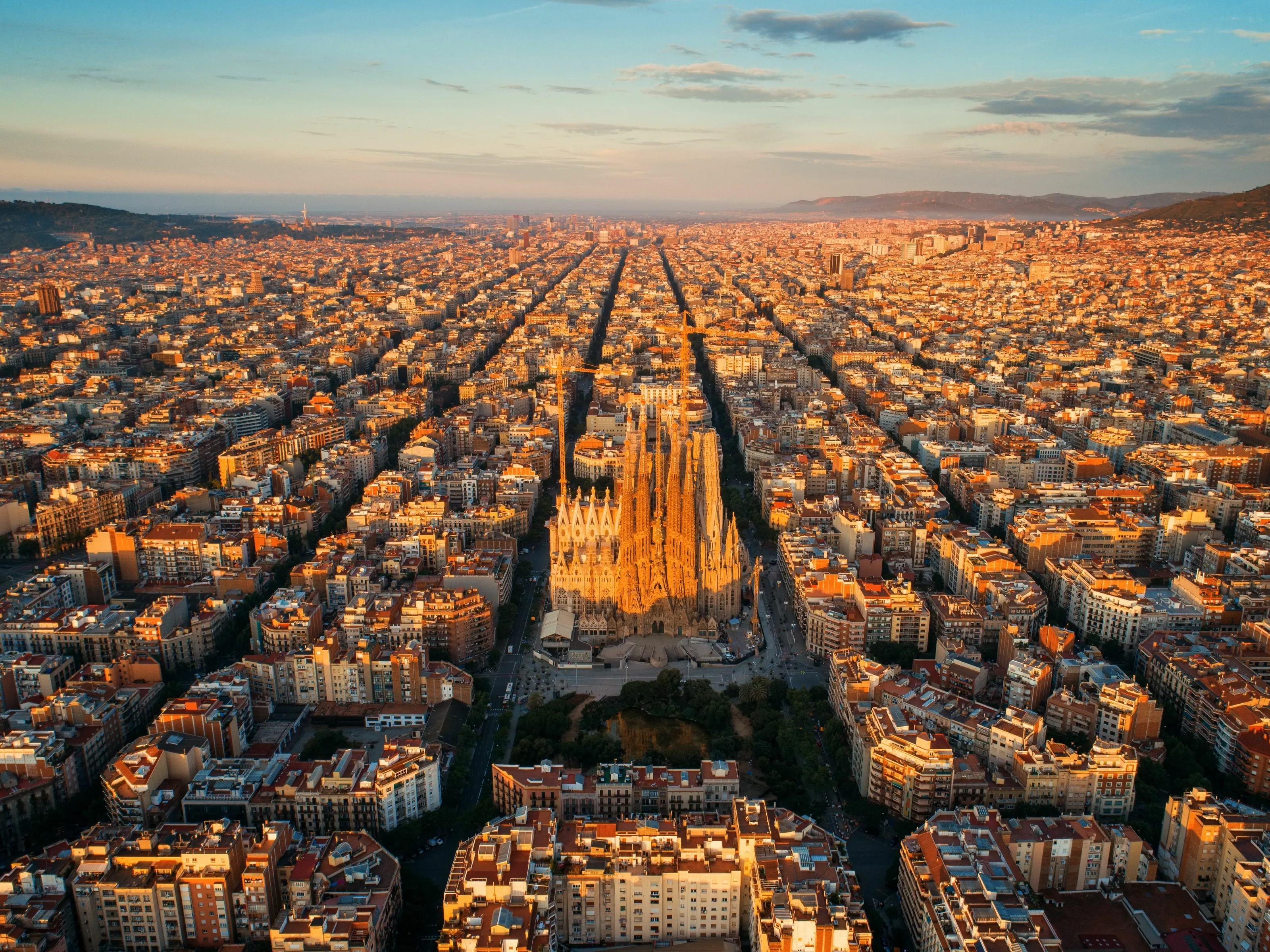Why Visit Florence?
Florence reigns as the Renaissance's crown jewel, where Michelangelo's David, Brunelleschi's dome, and Botticelli's Birth of Venus remind visitors that this compact Tuscan city birthed the artistic and intellectual revolution that shaped Western civilization. The Duomo's terracotta dome dominates skylines—climb 463 steps for breathtaking city panoramas across red-tiled roofs to surrounding Tuscan hills. The Uffizi Gallery houses the world's finest Renaissance collection in rooms where the Medici dynasty once conspired, while Accademia's David draws crowds who gasp at the 5-meter marble perfection.
Yet Florence transcends museums: stroll across the medieval Ponte Vecchio where goldsmiths have sold jewelry for centuries, get lost in the leather markets of San Lorenzo, and discover artisan workshops continuing centuries-old crafts in the Oltrarno district. Piazzale Michelangelo offers sunset views worth the uphill walk, while Boboli Gardens provide shaded Renaissance escapes behind Pitti Palace's imposing façade. Tuscan cuisine shines in trattorias serving perfect bistecca alla fiorentina (thick T-bone steak), handmade pici pasta, and Chianti wine from nearby vineyards.
Gelaterias craft artisanal flavors using local ingredients—skip tourist traps for authentic gems. The Arno River bisects the compact historic center, walkable end-to-end in 30 minutes, making Florence perfect for wandering. Visit April-June or September-October for mild weather and cultural festivals.
Florence delivers art history, culinary excellence, and Tuscan beauty concentrated in one magnificent Renaissance masterpiece.
What to Do
Renaissance Florence
Duomo & Brunelleschi's Dome
The cathedral nave is free to enter, but climbing Brunelleschi's Dome requires a ticket—usually via the official Brunelleschi Pass (~$32–$38) which also includes the bell tower, Baptistery, museum, and Santa Reparata over 3 days. Dome climbs are timed, 463 narrow steps with no elevator, so book online at least a week or two ahead in high season. Aim for the first slot of the day to avoid the longest queues. Giotto's Campanile (bell tower) is a slightly less claustrophobic alternative with excellent views of the dome itself.
Uffizi Gallery
One of the world's great art museums—book timed-entry tickets well in advance, especially March–October. As of 2025, standard Uffizi tickets are $27 (with a discounted early-bird ticket at $21 for entry before 8:55am). The first slot at 8:15am or late entries after 5pm tend to be calmer. Botticelli's Birth of Venus and Primavera are in the early Renaissance rooms; plan 2–3 hours minimum and use the official app or a good highlights map instead of overpriced third-party audio guides.
Accademia Gallery (David)
Pre-book to see Michelangelo's David without standing in a huge walk-up line—regular tickets are about $17 plus a small booking fee (around $22 in total via most official channels). David stands at the end of the main hall and is more powerful in person than photos suggest, even if the gallery itself is fairly compact. First and last entry times of the day have fewer tour groups; most visitors spend 60–90 minutes here.
Historic Center
Ponte Vecchio & Oltrarno
The Ponte Vecchio's jewellery shops and crowded views are classic Florence, but don't linger too long in the midday crush. Cross into the Oltrarno district for more local artisan workshops, leather studios and quieter streets. Pitti Palace (from around $17–$21 depending on when you buy) has lavish Medici rooms and connects to the Boboli Gardens; visiting the gardens at golden hour gives you greenery and city views away from the crowds.
Piazzale Michelangelo
Florence's famous postcard viewpoint is free and open 24/7. Climb up from the Oltrarno in about 20 minutes or take buses 12 or 13 most of the way. Sunset and the following blue hour are spectacular but crowded—arrive early if you want a front-row spot. Bring a takeaway aperitivo or picnic like the locals do, and if you want a quieter vantage point, continue a little higher up to San Miniato al Monte.
Palazzo Vecchio
The fortress-like town hall of Florence doubles as a richly decorated museum with Medici-era halls and hidden passages. Museum tickets are roughly $18–$19 for adults, with the Arnolfo Tower climb sold separately for about $14 The tower is a great alternative to the Duomo or Campanile views and is usually less overwhelmed by tour groups. Evening openings on some days add a moody, cinematic feel to the courtyard and Salone dei Cinquecento.
Local Florence
Mercato Centrale & Food Tour
On the ground floor, Mercato Centrale is still a real market where Florentines shop for meat, fish and produce—go in the morning for peak local life. The upper floor is a modern food hall: touristy but genuinely tasty. Don't miss lampredotto (tripe sandwich) from street carts outside (around $5); Da Nerbone inside is a classic if you can handle the queue. Avoid the 12:30–2pm peak if you dislike crowds.
Santo Spirito & Oltrarno Life
Piazza Santo Spirito is the heart of local nightlife in the Oltrarno—casual bars, students and very few tours. The basilica itself showcases Brunelleschi's architecture and is usually free or donation-based. Come for aperitivo, then wander Via Santo Spirito and surrounding streets to peek into artisan workshops, tiny wine bars and low-key trattorias that feel a world away from the Duomo crush.
San Lorenzo Market & Leather
The outdoor San Lorenzo stalls are famous for leather goods, but quality varies wildly. Expect to haggle—starting at 40–50% of the first price isn't unusual. Check stitching, zips and lining carefully and look for genuine 'Made in Italy' labels. For higher-end, more reliably crafted pieces, head to Scuola del Cuoio (Leather School) behind Santa Croce where prices are fixed but workmanship matches.
Gelato (The Real Stuff)
Skip the towering neon-colored mounds on the main piazzas—those usually signal artificial ingredients. Authentic gelaterias keep gelato in covered metal tubs or modestly piled trays with natural colors. Great picks include Gelateria dei Neri, La Carraia and Vivoli (one of Florence's oldest). Expect roughly $3–$4 for two scoops; pistachio and hazelnut are good tests of quality.
Gallery
Travel Information
Getting There
- Airports: FLR
Best Time to Visit
April, May, September, October
Climate: Moderate
Weather by Month
| Month | High | Low | Rainy days | Condition |
|---|---|---|---|---|
| January | 12°C | 3°C | 6 | Good |
| February | 14°C | 4°C | 9 | Good |
| March | 15°C | 5°C | 11 | Good |
| April | 20°C | 7°C | 8 | Excellent (best) |
| May | 24°C | 13°C | 10 | Excellent (best) |
| June | 26°C | 15°C | 11 | Good |
| July | 31°C | 18°C | 4 | Good |
| August | 32°C | 20°C | 7 | Good |
| September | 27°C | 16°C | 7 | Excellent (best) |
| October | 19°C | 10°C | 18 | Excellent (best) |
| November | 16°C | 8°C | 6 | Good |
| December | 11°C | 5°C | 19 | Wet |
Weather data: Open-Meteo Archive (2020-2024) • Open-Meteo.com (CC BY 4.0) • Historical avg. 2020–2024
Budget
Excludes flights
Visa Requirements
Schengen Area
💡 🌍 Traveler Tip (November 2025): Best time to visit: April, May, September, October.
Practical Information
Getting There
Florence Peretola Airport (FLR) is small, 4km northwest. Tramvia T2 connects to Santa Maria Novella station ($2 ~20-25 min). Taxis cost $22–$27 Uber $16–$22 Most visitors arrive by train—high-speed from Rome (1h30min, $32–$54), Venice (2h, $32–$54), Milan (1h40min, $38–$59). Trains arrive at central Santa Maria Novella station.
Getting Around
Florence's compact historic center is entirely walkable—most sights within 30 minutes on foot. Buses (ATAF) serve outer areas ($2/90-minute ticket). No metro. Taxis are expensive ($11–$16 short rides). Rent bikes for Cascine Park but avoid historic center (crowded, cobblestones). No need for cars—ZTL traffic zones fine tourists. Walking is the best way to discover hidden gems.
Money & Payments
Euro (EUR). Cards accepted at hotels, restaurants, and chain stores, but many small trattorias, gelaterias, and markets prefer cash. ATMs widespread—avoid Euronet. Exchange $1 ≈ $$1. Tipping: coperto (cover charge $1–$3) often included, but leave 5-10% for great service or round up. Service charge may be included—check receipt.
Language
Italian is official, with distinct Tuscan accent. English spoken in hotels, tourist restaurants, and main museums, but less so in neighborhood trattorias and markets. Learning Italian basics (Buongiorno, Grazie, Scusi) enhances interactions. Florentines appreciate attempts to speak Italian. Menus often have English in tourist areas.
Cultural Tips
Dress modestly for churches—shoulders and knees covered. Many close 12-3pm for lunch. Book Uffizi and Accademia months ahead. Lunch 12:30-2:30pm, dinner 7:30-10pm. Gelato: avoid neon colors and mountains of cream (signs of artificial). Sit-down cafés charge more than standing at bars. Learn difference between ristorante (formal), trattoria (casual), and osteria (rustic). Aperitivo hour 6-8pm offers free nibbles with drinks. Shops close Sundays and Monday mornings.
Perfect 3-Day Florence Itinerary
Day 1: Renaissance Highlights
Day 2: Art & Views
Day 3: Tuscan Excursion
Where to Stay in Florence
Historic Center (Duomo area)
Best for: Main sights, museums, shopping, central hotels, Renaissance landmarks
Oltrarno
Best for: Artisan workshops, authentic trattorias, Pitti Palace, local atmosphere
Santa Croce
Best for: Nightlife, markets, basilica, leather shops, younger crowd
San Frediano
Best for: Hipster bars, vintage shops, local life, aperitivo scene, authentic
Frequently Asked Questions
Do I need a visa to visit Florence?
What is the best time to visit Florence?
How much does a trip to Florence cost per day?
Is Florence safe for tourists?
What are the must-see attractions in Florence?
Popular Activities
Top-rated tours and experiences in Florence
Ready to Visit Florence?
Book your flights, accommodation, and activities






